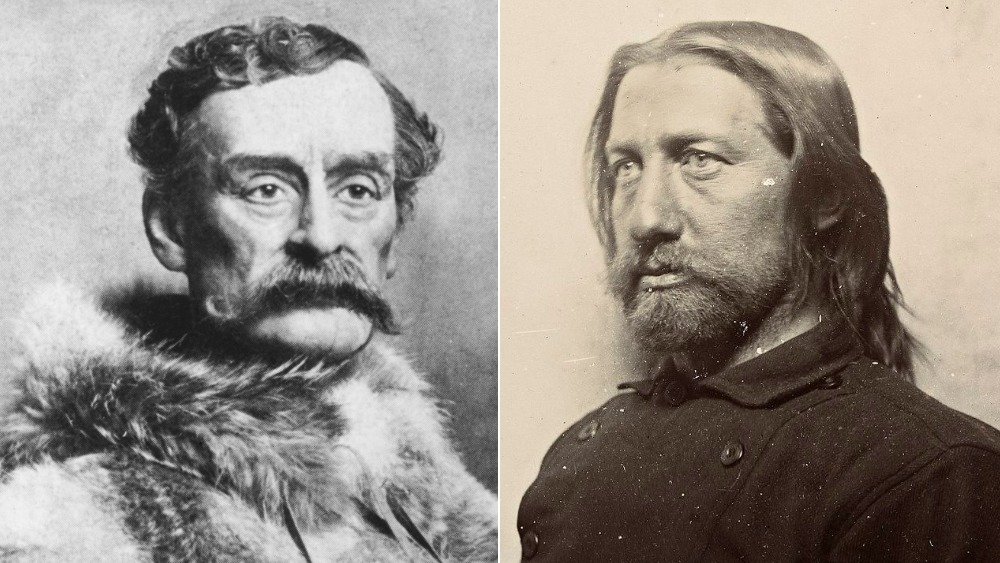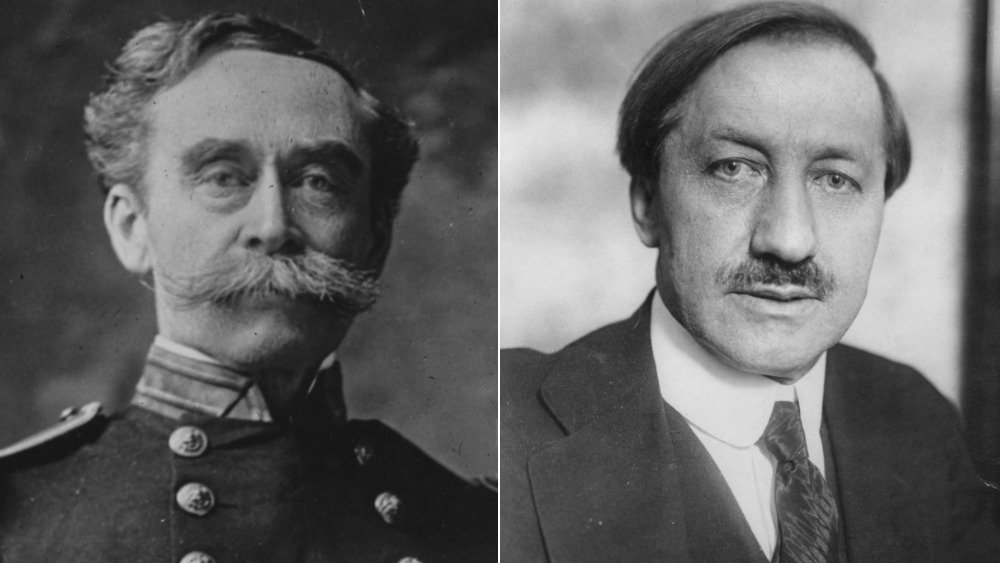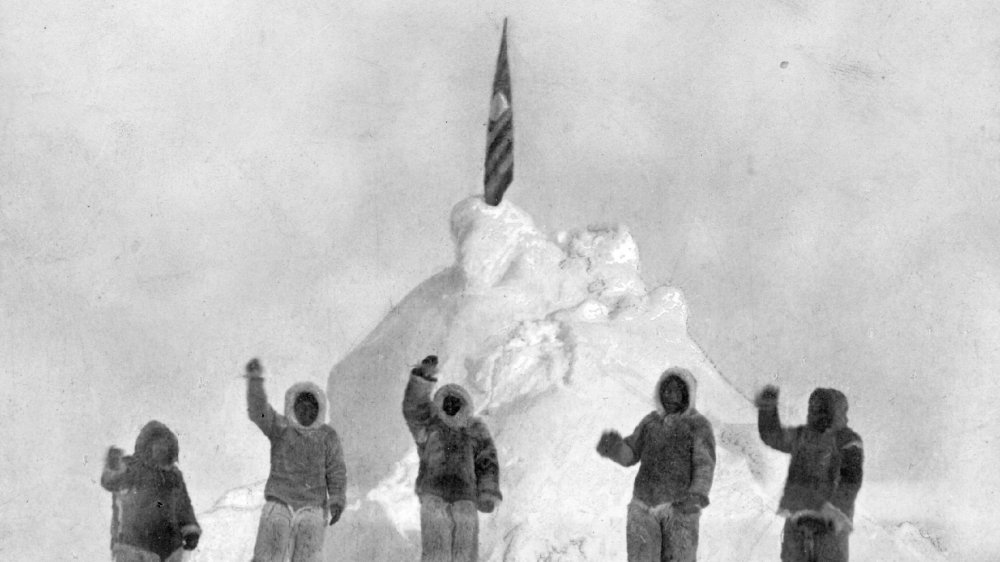The Truth About The First Man To Reach The North Pole
In the 1890s, explorer Robert Peary (left) started an Arctic expedition with all ten of his toes. He returned with only two. As recounted in Explorers and Exploration, the other eight toes snapped off when fellow explorer Matthew Henson removed Peary's sealskin boots. A horrified Henson exclaimed, "My God, Lieutenant! Why didn't you tell me your feet were frozen." Peary, content to let frostbite chomp off his toes, declared, "There's no time to pamper sick men on the trail. Besides, a few toes aren't much to give to achieve the Pole."
Peary's sights were set on the North Pole, and not even unsightly amputations could take his eyes off the prize. A magnet for explorers, the mythical place had attracted people for 300 years, per Smithsonian. However, instead of reaching their frozen holy grail, many tasted heaven the hard way, in an intense quest to be first to set foot there. Peary (and what was left of his feet) got into a heated dispute with ally-turned-rival-explorer Dr. Frederick Cook (right). Both men claimed victory, but contrary to widespread belief, neither succeeded.
Friends become polar opposites
Peary and Cook were once travel buddies, and each had previously served as the other's life preserver. A graduate of New York University Medical School, Cook became sick with grief after losing his wife and baby in labor. According to Smithsonian, he tried to sail away from his pain by becoming an explorer, and became a physician on expeditions with Peary, who was a civil engineer. When Peary broke two leg bones in an accident, Cook was there to mend him.
Peary's best friend, however, was his obsession with the spotlight, having once his mother in a letter, "Remember, mother, I must have fame." He barred expedition members from publishing about their travels before him. This put Cook at odds with him. However, when Peary got lost in the Arctic in 1901, Cook rescued him and nursed him back to health. Not that it mattered to Peary.
Peary burns Cook
In 1908, Cook announced that he'd reached the North Pole, but couldn't prove it. He stopped in Greenland to recuperate, then allegedly left his documents and equipment with his friend Harry Whitney, for safekeeping, while he traveled 700 miles to break the news to Denmark's king. Whitney found himself stranded for months, when a chartered vessel was a no-show, and Peary found Whitney in 1909. Funnily enough, he'd just completed what he believed was the first successful North Pole expedition. As Smithsonian details, Whitney claimed Peary agreed to bring him home, but wouldn't let him bring records from Cook's voyage.
In 1909, dueling headlines pronouncing Peary and Cook the first person to "discover" the North Pole were printed a week apart. Peary launched an all-out assault on Cook's credibility. Peary's own evidence was sketchy, but Cook couldn't produce anything tangible. The U.S. Congress formally sided with Peary in 1911, but here's the kicker: according to History, later studies determined that both men fell short. Peary came closer, but may have missed the mark by 30 miles. The first person confirmed to have landed exactly on the North Pole was Lieutenant Colonel Joseph Fletcher, who flew there on a plane in 1952, presumably with all toes intact.


